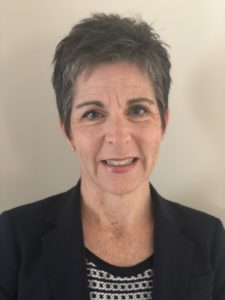
For long-term care and skilled nursing professionals, there is nothing more important than the health of their residents and patients. Most often physical health is top of mind and prioritized, however, mental health is just as important and can have a huge impact on residents’ physical health.
The National Institute on Aging notes that “depression, especially in middle-aged or older adults, can co-occur with other serious medical illnesses such as diabetes, cancer, heart disease, and Parkinson’s disease. Depression can make these conditions worse and vice versa.” If mental health is prioritized, many residents’ health problems can be lessened or potentially prevented.
But how can mental health be addressed?
Set up existing technology to aggregate health trends
Aging patients and residents reveal a lot about themselves through their moods, but if trends go unnoticed, a lot can be missed. Today’s caregiving professionals have some of the most innovative solutions at their fingertips, but where many miss the mark is by not tapping into these systems’ data trends.
When the health information technology collects is aggregated and compared, it can help flag mood anomalies more quickly and be used as a proactive form of care. The data and trends can inform staff of potential health complications. Once existing communication portals and health dashboards are set up to aggregate the right data, facilities can then begin to analyze mood trends alongside health data and provide more proactive care.
Make checking resident moods a standard part of care
Long-term care and skilled-nursing staff members interact directly with residents and patients every single day. This means that they are observing their residents’ or patients’ moods firsthand, and although they may make a mental note of it, this information isn’t typically recorded. However, when staff are equipped with the right tools and direction, they are able to record their patient/resident’s mood, turning their observations into concrete data.
This can be as easy as marking how a resident or patient is feeling each day on a scale from one to 10. A data and analytics dashboard can then pull mood information over time, automatically formatting and displaying it for easy viewing. Staff can access this dashboard to see a resident/patient’s individual snapshot, helping them to identify any potential mental health problems.
For example, if a nurse checks one of her patient’s snapshots and sees that their mood has been on a downward trend, they can step in to see if anything is wrong with the patient and even proactively recommend mental health services before the issue escalates other physical health issues.
Staff can also use this information to look for other patterns. For instance, a long-term care resident might consistently be in a bad mood every Sunday. With this information, a staff member can try to find out the reason why, whether it’s because they don’t receive any visitors or because their routine changes on Sundays. However, without recording patients’ or residents’ moods, this would be a particularly hard pattern to identify otherwise.
Track daily activity data to detect mental health issues early
Additional data that can help give insight to a resident or patient’s mental health can also be collected using a communication portal. Information such as how often a patient/resident eats their meals, how often they attend or sign up for activities, or what time they wake up can all also reveal that a patient/resident might be experiencing poor mental health.
For example, if a resident stops attending any of the activities they used to enjoy and is sleeping in until later than their normal time, that is an indicator that they could be grappling with some mental health issues and a nurse can help catch that issue early. When this data can be viewed alongside the mood data, staff can have an even bigger picture of what their residents or patients are experiencing.
An action as simple as recording a resident’s mood with the touch of a button can have a huge impact on their health, because when staff are able to identify concerning patterns or changes in their residents early, they can help prevent long-term mental and physical issues, saving them a lot of difficulty down the road.
Amy Jeffs currently serves as Vice President of Status Solutions, and has held various positions within the mission-based organization for the past 13 years. Her primary duties include assisting Status Solutions’ founder and president with developing and implementing the company’s overall go-to-market strategy. Her past experience includes 20+ years of technology business and marketing at start-ups up to Fortune 500 companies.




